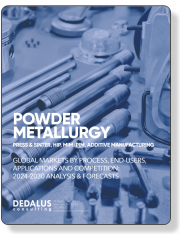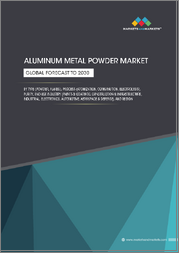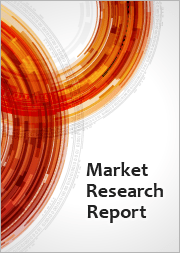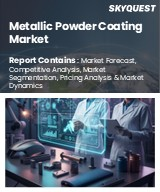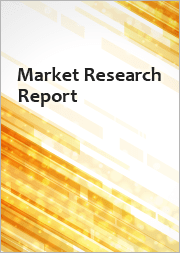
|
시장보고서
상품코드
1603912
세계의 나노 금속 산화물 시장 예측(-2030년) : 유형별, 기능별, 용도별 및 지역별 분석Nano Metal Oxide Market Forecasts to 2030 - Global Analysis by Type, Functionality, Application and By Geography |
||||||
Stratistics MRC에 따르면, 나노 금속 산화물 세계 시장은 2024년 54억 2,000만 달러에 이르고, 예측 기간 동안 8.5%의 연평균 복합 성장률(CAGR)로 성장하여 2030년에는 88억 5,000만 달러에 달할 것으로 예상됩니다.
나노 금속 산화물은 금속 원소와 산소로 구성된 1-100 나노미터의 입자 크기를 가진 무기 물질입니다. 벌크 금속 산화물과 달리 나노 입자는 크기가 작고 표면적이 커서 반응성, 전도성, 안정성 향상 등 특수한 물리적, 화학적, 광학적 특성을 가지고 있습니다. 이산화티타늄(TiO2), 산화아연(ZnO), 산화철(FeO3)은 나노 금속 산화물의 일종으로 에너지 저장, 환경 정화, 센서, 전자, 촉매 작용 등에 광범위하게 활용되고 있습니다. 나노 금속 산화물은 광촉매, 자외선 차단, 항균 활성 등 분야에서 성능을 향상시킵니다.
헬스케어 분야에서 나노소재 수요 증가
헬스케어 분야에서 나노소재에 대한 수요가 증가하면서 나노 금속 산화물 시장이 성장하고 있습니다. 산화철과 산화아연을 포함한 나노 금속 산화물은 큰 표면적, 자화율, 생체 적합성 등 특수한 특성을 가지고 있어 이미징, 진단, 암 치료, 약물 전달에 이상적입니다. 치료 효과는 특정 세포와 조직을 표적으로 삼을 수 있는 능력에 의해 향상됩니다. 나노 금속 산화물 수요는 의료 산업이 첨단 의료 응용 분야에 나노 기술을 점점 더 많이 사용함에 따라 증가할 것으로 예상되며, 이는 기술 혁신에 박차를 가하고 시장 점유율을 확대할 것으로 예상됩니다.
높은 생산 비용
높은 제조 비용은 나노 금속 산화물 산업의 확장을 크게 저해하고 있습니다. 이러한 재료는 수열법, 화학 기상 성장법, 졸-겔 합성법 등 고도의 공정을 사용하여 제조해야 하는데, 모두 고가의 원자재와 에너지 집약적인 절차를 필요로 합니다. 나노 금속 산화물 기반 제품은 제조 비용이 높기 때문에 가격에 민감한 산업에 적용이 제한적입니다. 따라서 시장 확대에 한계가 있습니다.
에너지 저장 및 변환의 발전
나노 금속 산화물 산업은 에너지 저장 및 변환의 발전으로 인해 빠르게 성장하고 있습니다. 산화철(FeO3), 산화아연(ZnO), 이산화티타늄(TiO2)과 같은 나노 금속산화물은 연료전지, 리튬이온전지, 슈퍼커패시터와 같은 에너지 저장 장치의 기능과 효율을 향상시키는 데 필수적입니다. 높은 표면적, 높은 전도성 및 촉매 특성으로 인해 배터리 수명 연장, 출력 밀도 향상 및 빠른 에너지 저장이 가능합니다. 전기자동차 및 재생 가능 에너지에 대한 수요가 증가함에 따라 나노 금속 산화물의 중요성이 점점 더 커지고 있습니다.
생산 확대에 따른 기술적 과제
나노 금속 산화물 시장의 성장을 가로막는 것은 생산 확대의 기술적 장애물입니다. 나노 금속 산화물은 많은 응용 분야에서 큰 잠재력을 가지고 있지만, 균일성과 품질을 희생하지 않고 실험실에서 산업 환경으로 생산 규모를 확장하는 것은 여전히 어렵습니다. 졸-겔과 화학적 증착은 필요한 특정 제조 공정의 두 가지 예이며, 이는 복잡하고 확장하기 어렵습니다. 이러한 어려움은 시장 확대를 제한하고 있습니다.
COVID-19의 영향 :
코로나19는 공급망 지연, 원자재 부족, 제조 정체로 인해 나노 금속 산화물 시장을 혼란에 빠뜨렸습니다. 에너지 저장 및 전자제품과 같은 특정 응용 분야 수요는 산업 활동의 감소로 인해 일시적으로 감소했습니다. 그러나 이 위기는 약물 전달 및 진단과 같은 헬스케어 분야의 첨단 재료에 대한 수요를 가속화했습니다. 산업이 회복됨에 따라 나노기술의 채택 확대가 원동력이 되어 시장이 다시 활기를 되찾을 것으로 예상됩니다.
예측 기간 동안 항균 분야가 가장 클 것으로 예상됩니다.
산화아연(ZnO) 및 이산화티타늄(TiO2)과 같은 나노 금속 산화물은 강력한 항균 특성을 나타내며 헬스케어, 섬유, 코팅, 식품 포장 등의 응용 분야에 이상적이기 때문에 항균 분야는 예측 기간 동안 가장 큰 성장을 보일 것으로 예상됩니다. 박테리아의 증식을 억제하고 병원균으로부터 장기간 보호할 수 있는 능력은 특히 감염 제어, 퍼스널케어 및 표면 소독을 목적으로 하는 제품에서 그 수요를 주도하고 있습니다. 위생과 안전에 대한 관심이 높아지면서 항균제 시장 확대가 더욱 가속화되고 있습니다.
예측 기간 동안 전도성 부문이 가장 높은 CAGR을 보일 것으로 예상됩니다.
산화아연(ZnO)과 산화주석(SnO2)은 나노 단위에서 높은 전기 전도성을 보여 전자, 센서, 에너지 저장 장치에 적용하는 데 필수적입니다. 트랜지스터, 커패시터, 배터리와 같은 부품의 성능을 향상시키는 능력은 자동차, 가전제품, 재생 에너지와 같은 산업에서 채택을 가속화하여 시장 수요를 더욱 촉진하고 있습니다.
가장 큰 점유율을 차지하는 지역 :
북미는 전자, 에너지 저장, 헬스케어 분야의 첨단 소재에 대한 수요로 인해 예측 기간 동안 가장 큰 시장 점유율을 차지할 것으로 예상됩니다. 이 지역은 기술 혁신에 중점을 두고 있으며, 나노기술에 대한 투자가 증가함에 따라 반도체, 배터리, 코팅 등의 분야에서 나노 금속산화물의 사용이 증가하고 있습니다. 또한, 지속 가능한 기술에 대한 규제 당국의 지원과 헬스케어 및 소비자 제품의 항균 솔루션에 대한 수요 증가는 시장 성장을 더욱 촉진하여 북미를 세계 나노 금속 산화물 시장의 주요 업체로 자리매김하고 있습니다.
CAGR이 가장 높은 지역 :
아시아태평양은 나노 소재 응용 분야에 대한 수요 증가로 인해 예측 기간 동안 가장 높은 CAGR을 보일 것으로 예상됩니다. 중국, 일본, 인도와 같은 국가에서는 반도체 제조, 에너지 효율적인 장치 및 오염 방지 기술에 나노 금속 산화물을 채택하는 추세가 증가하고 있습니다. 또한 건강과 지속가능성에 대한 인식이 높아지면서 항균 및 친환경 솔루션에 대한 수요가 증가하고 있습니다. 연구개발에 대한 정부의 강력한 이니셔티브와 제조 능력의 확대는 이 지역 시장 성장에 더욱 기여하고 있습니다.
무료 맞춤형 서비스 :
이 보고서를 구독하는 고객은 다음과 같은 무료 맞춤화 옵션 중 하나를 사용할 수 있습니다.
- 기업 프로파일
- 추가 시장 기업 종합 프로파일링(최대 3개사까지)
- 주요 기업의 SWOT 분석(최대 3개사)
- 지역 세분화
- 고객의 관심에 따른 주요 국가별 시장 추정치, 예측, CAGR(주: 타당성 확인에 따라 다름)
- 경쟁사 벤치마킹
- 제품 포트폴리오, 지리적 입지, 전략적 제휴를 기반으로 한 주요 기업 벤치마킹
목차
제1장 주요 요약
제2장 서문
- 개요
- 이해관계자
- 조사 범위
- 조사 방법
- 데이터 마이닝
- 데이터 분석
- 데이터 검증
- 조사 접근
- 조사 정보원
- 1차 조사 정보원
- 2차 조사 정보원
- 전제조건
제3장 시장 동향 분석
- 성장 촉진요인
- 성장 억제요인
- 기회
- 위협
- 용도 분석
- 신흥 시장
- COVID-19의 영향
제4장 Porter의 Five Forces 분석
- 공급 기업의 교섭력
- 바이어의 교섭력
- 대체품의 위협
- 신규 진출업체의 위협
- 경쟁 기업간 경쟁 관계
제5장 세계의 나노 금속 산화물 시장 : 유형별
- 산화 알루미늄
- 산화 세륨
- 산화 구리
- 산화 철
- 산화 마그네슘
- 나노클레이
- 이산화규소
- 이산화티타늄
- 산화 아연
- 기타 유형
제6장 세계의 나노 금속 산화물 시장 : 기능별
- UV 보호
- 항균성
- 전기 전도성
- 촉매 활성
- 광학 특성
제7장 세계의 나노 금속 산화물 시장 : 용도별
- 전자 및 전기
- 촉매
- 코팅 및 페인트
- 에너지 저장
- 자외선 차단제 및 화장품
- 환경 및 수처리
- 바이오메디컬 및 헬스케어
- 섬유
- 기타 용도
제8장 세계의 나노 금속 산화물 시장 : 지역별
- 북미
- 미국
- 캐나다
- 멕시코
- 유럽
- 독일
- 영국
- 이탈리아
- 프랑스
- 스페인
- 기타 유럽
- 아시아태평양
- 일본
- 중국
- 인도
- 호주
- 뉴질랜드
- 한국
- 기타 아시아태평양
- 남미
- 아르헨티나
- 브라질
- 칠레
- 기타 남미
- 중동 및 아프리카
- 사우디아라비아
- 아랍에미리트(UAE)
- 카타르
- 남아프리카공화국
- 기타 중동 및 아프리카
제9장 주요 발전
- 계약/파트너십/협업/합작투자(JV)
- 인수와 합병
- 신제품 발매
- 사업 확대
- 기타 주요 전략
제10장 기업 프로파일링
- BASF SE
- Advanced Nano Products Co., Ltd.
- American Elements
- Evonik Industries AG
- Ferro Corporation
- Nanoshel LLC
- Nanografi Nano Technology
- Nanophase Technologies Corporation
- Sigma-Aldrich
- SkySpring Nanomaterials Inc
- STREM Chemicals, Inc.
- Techinstro
- The Inorganic Venture
- Tokyo Chemical Industry Co., Ltd.(TCI)
- Tosoh Corporation
- Ultra Nanotech
LSH 24.12.13
According to Stratistics MRC, the Global Nano Metal Oxide Market is accounted for $5.42 billion in 2024 and is expected to reach $8.85 billion by 2030 growing at a CAGR of 8.5% during the forecast period. Nano metal oxides are inorganic substances with particle sizes between one and one hundred nanometers that are made up of metal elements and oxygen. In contrast to bulk metal oxides, these nanoparticles have special physical, chemical, and optical characteristics such increased reactivity, conductivity, and stability because to their small size and large surface area. Titanium dioxide (TiO2), zinc oxide (ZnO), and iron oxide (FeO3) are examples of nano metal oxides that are widely used in energy storage, environmental remediation, sensors, electronics, and catalysis. They provide enhanced performance in areas like photocatalysis, UV protection, and antibacterial activity.
Market Dynamics:
Driver:
Rising Demand for Nanomaterials in Healthcare
Rising demand for nanomaterials in healthcare is boosting the nano metal oxide market. Nano metal oxides, including iron oxide and zinc oxide, have special qualities like large surface area, magnetic susceptibility, and biocompatibility that make them perfect for imaging, diagnostics, cancer treatment, and drug delivery. Treatment effectiveness is increased by their capacity to target particular cells or tissues. The need for nano metal oxides is anticipated to increase as the healthcare industry uses nanotechnology more and more for cutting-edge medical applications, which will spur innovation and increase their market share.
Restraint:
High Cost of Production
The high production cost severely inhibits the expansion of the nano metal oxide industry. These materials must be manufactured using sophisticated processes such hydrothermal methods, chemical vapor deposition, and sol-gel synthesis, all of which need costly raw materials and energy-intensive procedures. The application of nano metal oxide-based products is limited in price-sensitive industries due to their high production costs. This limits wider market expansion.
Opportunity:
Advancements in Energy Storage and Conversion
The nano metal oxide industry is growing rapidly due to advances in energy storage and conversion. Nano metal oxides like iron oxide (FeO3), zinc oxide (ZnO), and titanium dioxide (TiO2) are essential for enhancing the functionality and efficiency of energy storage devices like fuel cells, lithium-ion batteries, and supercapacitors. Longer battery life, increased power density, and quicker energy storage are made possible by their high surface area, higher conductivity, and catalytic qualities. Nano metal oxides are becoming more and more important as the demand for electric vehicles and renewable energy sources increases.
Threat:
Technical Challenges in Scaling Production
Technical hurdles in expanding manufacturing hinder the nano metal oxide market's growth. Although nano metal oxides have great potential for a number of uses, it is still challenging to scale up production from the lab to the industrial setting without sacrificing uniformity and quality. Sol-gel and chemical vapor deposition are two examples of the specific manufacturing processes that are needed, and they are intricate and challenging to scale up. These difficulties limit the wider market expansion.
Covid-19 Impact:
The COVID-19 pandemic disrupted the nano metal oxide market by causing supply chain delays, raw material shortages, and manufacturing slowdowns. Demand for certain applications, like energy storage and electronics, temporarily declined due to reduced industrial activities. However, the crisis also accelerated the need for advanced materials in healthcare, including for drug delivery and diagnostics. As industries recover, the market is expected to regain momentum, driven by increased adoption of nanotechnology.
The antimicrobial segment is expected to be the largest during the forecast period
The antimicrobial segment is expected to be the largest during the forecast period because nano metal oxides like zinc oxide (ZnO) and titanium dioxide (TiO2) exhibit strong antimicrobial properties, making them ideal for applications in healthcare, textiles, coatings, and food packaging. Their ability to inhibit bacterial growth and provide long-lasting protection against pathogens is driving demand, particularly in products aimed at infection control, personal care, and surface disinfectants. This growing focus on hygiene and safety is further fueling the expansion of the antimicrobial market.
The electroconductivity segment is expected to have the highest CAGR during the forecast period
The electroconductivity segment is expected to have the highest CAGR during the forecast period as zinc oxide (ZnO) and tin oxide (SnO2), exhibit enhanced electrical conductivity at the nanoscale, making them vital for applications in electronics, sensors, and energy storage devices. Their ability to improve the performance of components like transistors, capacitors, and batteries is accelerating their adoption in industries such as automotive, consumer electronics, and renewable energy, further fueling market demand.
Region with largest share:
North America is projected to hold the largest market share during the forecast period due to demand for advanced materials in electronics, energy storage, and healthcare. The regions strong focus on innovation, coupled with growing investments in nanotechnology, has spurred the use of nano metal oxides in sectors such as semiconductors, batteries, and coatings. Additionally, regulatory support for sustainable technologies and rising demand for antimicrobial solutions in healthcare and consumer products further fuel market growth, positioning North America as a key player in the global nano metal oxide market.
Region with highest CAGR:
Asia Pacific is projected to witness the highest CAGR over the forecast period owing to rising demand for nanomaterials applications. Countries like China, Japan, and India are increasingly adopting nano metal oxides in semiconductor manufacturing, energy-efficient devices, and pollution control technologies. Additionally, growing awareness of health and sustainability is fueling demand for antimicrobial and eco-friendly solutions. Strong government initiatives in R&D and expanding manufacturing capabilities further contribute to the market's growth in this region.
Key players in the market
Some of the key players in Nano Metal Oxide Market include BASF SE , Advanced Nano Products Co., Ltd., American Elements, Evonik Industries AG, Ferro Corporation, Nanoshel LLC, Nanografi Nano Technology, Nanophase Technologies Corporation, Sigma-Aldrich, SkySpring Nanomaterials Inc., STREM Chemicals, Inc., Techinstro, The Inorganic Venture, Tokyo Chemical Industry Co., Ltd. (TCI), Tosoh Corporation and Ultra Nanotech.
Key Developments:
In November 2024, BASF and Acies Bio have entered into a transformative partnership to further develop a platform for fermentation technology from methanol for the production of fatty alcohols.
In October 2024, BASF and AM Green B.V. have entered a memorandum of understanding (MoU) to jointly evaluate and develop business opportunities for low-carbon chemicals produced exclusively with renewable energy, and the corresponding value chains in India.
In August 2024, Nanoshel and Smart Planet Technologies form strategic partnership for next-generation environmental packaging solutions.
Types Covered:
- Aluminum Oxide
- Cerium Oxide
- Copper Oxide
- Iron Oxide
- Magnesium Oxide
- Nanoclay
- Silicon Dioxide
- Titanium Dioxide
- Zinc Oxide
- Other Types
Functionalities Covered:
- UV Protection
- Antimicrobial
- Electroconductivity
- Catalytic Activity
- Optical Properties
Applications Covered:
- Electronics & Electrical
- Catalysis
- Coatings & Paints
- Energy Storage
- Sunscreens & Cosmetics
- Environmental & Water Treatment
- Biomedical & Healthcare
- Textiles
- Other Applications
Regions Covered:
- North America
- US
- Canada
- Mexico
- Europe
- Germany
- UK
- Italy
- France
- Spain
- Rest of Europe
- Asia Pacific
- Japan
- China
- India
- Australia
- New Zealand
- South Korea
- Rest of Asia Pacific
- South America
- Argentina
- Brazil
- Chile
- Rest of South America
- Middle East & Africa
- Saudi Arabia
- UAE
- Qatar
- South Africa
- Rest of Middle East & Africa
What our report offers:
- Market share assessments for the regional and country-level segments
- Strategic recommendations for the new entrants
- Covers Market data for the years 2022, 2023, 2024, 2026, and 2030
- Market Trends (Drivers, Constraints, Opportunities, Threats, Challenges, Investment Opportunities, and recommendations)
- Strategic recommendations in key business segments based on the market estimations
- Competitive landscaping mapping the key common trends
- Company profiling with detailed strategies, financials, and recent developments
- Supply chain trends mapping the latest technological advancements
Free Customization Offerings:
All the customers of this report will be entitled to receive one of the following free customization options:
- Company Profiling
- Comprehensive profiling of additional market players (up to 3)
- SWOT Analysis of key players (up to 3)
- Regional Segmentation
- Market estimations, Forecasts and CAGR of any prominent country as per the client's interest (Note: Depends on feasibility check)
- Competitive Benchmarking
- Benchmarking of key players based on product portfolio, geographical presence, and strategic alliances
Table of Contents
1 Executive Summary
2 Preface
- 2.1 Abstract
- 2.2 Stake Holders
- 2.3 Research Scope
- 2.4 Research Methodology
- 2.4.1 Data Mining
- 2.4.2 Data Analysis
- 2.4.3 Data Validation
- 2.4.4 Research Approach
- 2.5 Research Sources
- 2.5.1 Primary Research Sources
- 2.5.2 Secondary Research Sources
- 2.5.3 Assumptions
3 Market Trend Analysis
- 3.1 Introduction
- 3.2 Drivers
- 3.3 Restraints
- 3.4 Opportunities
- 3.5 Threats
- 3.6 Application Analysis
- 3.7 Emerging Markets
- 3.8 Impact of Covid-19
4 Porters Five Force Analysis
- 4.1 Bargaining power of suppliers
- 4.2 Bargaining power of buyers
- 4.3 Threat of substitutes
- 4.4 Threat of new entrants
- 4.5 Competitive rivalry
5 Global Nano Metal Oxide Market, By Type
- 5.1 Introduction
- 5.2 Aluminum Oxide
- 5.3 Cerium Oxide
- 5.4 Copper Oxide
- 5.5 Iron Oxide
- 5.6 Magnesium Oxide
- 5.7 Nanoclay
- 5.8 Silicon Dioxide
- 5.9 Titanium Dioxide
- 5.10 Zinc Oxide
- 5.11 Other Types
6 Global Nano Metal Oxide Market, By Functionality
- 6.1 Introduction
- 6.2 UV Protection
- 6.3 Antimicrobial
- 6.4 Electroconductivity
- 6.5 Catalytic Activity
- 6.6 Optical Properties
7 Global Nano Metal Oxide Market, By Application
- 7.1 Introduction
- 7.2 Electronics & Electrical
- 7.3 Catalysis
- 7.4 Coatings & Paints
- 7.5 Energy Storage
- 7.6 Sunscreens & Cosmetics
- 7.7 Environmental & Water Treatment
- 7.8 Biomedical & Healthcare
- 7.9 Textiles
- 7.10 Other Applications
8 Global Nano Metal Oxide Market, By Geography
- 8.1 Introduction
- 8.2 North America
- 8.2.1 US
- 8.2.2 Canada
- 8.2.3 Mexico
- 8.3 Europe
- 8.3.1 Germany
- 8.3.2 UK
- 8.3.3 Italy
- 8.3.4 France
- 8.3.5 Spain
- 8.3.6 Rest of Europe
- 8.4 Asia Pacific
- 8.4.1 Japan
- 8.4.2 China
- 8.4.3 India
- 8.4.4 Australia
- 8.4.5 New Zealand
- 8.4.6 South Korea
- 8.4.7 Rest of Asia Pacific
- 8.5 South America
- 8.5.1 Argentina
- 8.5.2 Brazil
- 8.5.3 Chile
- 8.5.4 Rest of South America
- 8.6 Middle East & Africa
- 8.6.1 Saudi Arabia
- 8.6.2 UAE
- 8.6.3 Qatar
- 8.6.4 South Africa
- 8.6.5 Rest of Middle East & Africa
9 Key Developments
- 9.1 Agreements, Partnerships, Collaborations and Joint Ventures
- 9.2 Acquisitions & Mergers
- 9.3 New Product Launch
- 9.4 Expansions
- 9.5 Other Key Strategies
10 Company Profiling
- 10.1 BASF SE
- 10.2 Advanced Nano Products Co., Ltd.
- 10.3 American Elements
- 10.4 Evonik Industries AG
- 10.5 Ferro Corporation
- 10.6 Nanoshel LLC
- 10.7 Nanografi Nano Technology
- 10.8 Nanophase Technologies Corporation
- 10.9 Sigma-Aldrich
- 10.10 SkySpring Nanomaterials Inc
- 10.11 STREM Chemicals, Inc.
- 10.12 Techinstro
- 10.13 The Inorganic Venture
- 10.14 Tokyo Chemical Industry Co., Ltd. (TCI)
- 10.15 Tosoh Corporation
- 10.16 Ultra Nanotech
- 추가 시장 기업 종합 프로파일링(최대 3개사까지)
- 주요 기업의 SWOT 분석(최대 3개사)
- 고객의 관심에 따른 주요 국가별 시장 추정치, 예측, CAGR(주: 타당성 확인에 따라 다름)
- 제품 포트폴리오, 지리적 입지, 전략적 제휴를 기반으로 한 주요 기업 벤치마킹
- 데이터 마이닝
- 데이터 분석
- 데이터 검증
- 조사 접근
- 1차 조사 정보원
- 2차 조사 정보원
- 전제조건
- 미국
- 캐나다
- 멕시코
- 독일
- 영국
- 이탈리아
- 프랑스
- 스페인
- 기타 유럽
- 일본
- 중국
- 인도
- 호주
- 뉴질랜드
- 한국
- 기타 아시아태평양
- 아르헨티나
- 브라질
- 칠레
- 기타 남미
- 사우디아라비아
- 아랍에미리트(UAE)
- 카타르
- 남아프리카공화국
- 기타 중동 및 아프리카
According to Stratistics MRC, the Global Nano Metal Oxide Market is accounted for $5.42 billion in 2024 and is expected to reach $8.85 billion by 2030 growing at a CAGR of 8.5% during the forecast period. Nano metal oxides are inorganic substances with particle sizes between one and one hundred nanometers that are made up of metal elements and oxygen. In contrast to bulk metal oxides, these nanoparticles have special physical, chemical, and optical characteristics such increased reactivity, conductivity, and stability because to their small size and large surface area. Titanium dioxide (TiO2), zinc oxide (ZnO), and iron oxide (FeO3) are examples of nano metal oxides that are widely used in energy storage, environmental remediation, sensors, electronics, and catalysis. They provide enhanced performance in areas like photocatalysis, UV protection, and antibacterial activity.
Market Dynamics:
Driver:
Rising Demand for Nanomaterials in Healthcare
Rising demand for nanomaterials in healthcare is boosting the nano metal oxide market. Nano metal oxides, including iron oxide and zinc oxide, have special qualities like large surface area, magnetic susceptibility, and biocompatibility that make them perfect for imaging, diagnostics, cancer treatment, and drug delivery. Treatment effectiveness is increased by their capacity to target particular cells or tissues. The need for nano metal oxides is anticipated to increase as the healthcare industry uses nanotechnology more and more for cutting-edge medical applications, which will spur innovation and increase their market share.
Restraint:
High Cost of Production
The high production cost severely inhibits the expansion of the nano metal oxide industry. These materials must be manufactured using sophisticated processes such hydrothermal methods, chemical vapor deposition, and sol-gel synthesis, all of which need costly raw materials and energy-intensive procedures. The application of nano metal oxide-based products is limited in price-sensitive industries due to their high production costs. This limits wider market expansion.
Opportunity:
Advancements in Energy Storage and Conversion
The nano metal oxide industry is growing rapidly due to advances in energy storage and conversion. Nano metal oxides like iron oxide (FeO3), zinc oxide (ZnO), and titanium dioxide (TiO2) are essential for enhancing the functionality and efficiency of energy storage devices like fuel cells, lithium-ion batteries, and supercapacitors. Longer battery life, increased power density, and quicker energy storage are made possible by their high surface area, higher conductivity, and catalytic qualities. Nano metal oxides are becoming more and more important as the demand for electric vehicles and renewable energy sources increases.
Threat:
Technical Challenges in Scaling Production
Technical hurdles in expanding manufacturing hinder the nano metal oxide market's growth. Although nano metal oxides have great potential for a number of uses, it is still challenging to scale up production from the lab to the industrial setting without sacrificing uniformity and quality. Sol-gel and chemical vapor deposition are two examples of the specific manufacturing processes that are needed, and they are intricate and challenging to scale up. These difficulties limit the wider market expansion.
Covid-19 Impact:
The COVID-19 pandemic disrupted the nano metal oxide market by causing supply chain delays, raw material shortages, and manufacturing slowdowns. Demand for certain applications, like energy storage and electronics, temporarily declined due to reduced industrial activities. However, the crisis also accelerated the need for advanced materials in healthcare, including for drug delivery and diagnostics. As industries recover, the market is expected to regain momentum, driven by increased adoption of nanotechnology.
The antimicrobial segment is expected to be the largest during the forecast period
The antimicrobial segment is expected to be the largest during the forecast period because nano metal oxides like zinc oxide (ZnO) and titanium dioxide (TiO2) exhibit strong antimicrobial properties, making them ideal for applications in healthcare, textiles, coatings, and food packaging. Their ability to inhibit bacterial growth and provide long-lasting protection against pathogens is driving demand, particularly in products aimed at infection control, personal care, and surface disinfectants. This growing focus on hygiene and safety is further fueling the expansion of the antimicrobial market.
The electroconductivity segment is expected to have the highest CAGR during the forecast period
The electroconductivity segment is expected to have the highest CAGR during the forecast period as zinc oxide (ZnO) and tin oxide (SnO2), exhibit enhanced electrical conductivity at the nanoscale, making them vital for applications in electronics, sensors, and energy storage devices. Their ability to improve the performance of components like transistors, capacitors, and batteries is accelerating their adoption in industries such as automotive, consumer electronics, and renewable energy, further fueling market demand.
Region with largest share:
North America is projected to hold the largest market share during the forecast period due to demand for advanced materials in electronics, energy storage, and healthcare. The regions strong focus on innovation, coupled with growing investments in nanotechnology, has spurred the use of nano metal oxides in sectors such as semiconductors, batteries, and coatings. Additionally, regulatory support for sustainable technologies and rising demand for antimicrobial solutions in healthcare and consumer products further fuel market growth, positioning North America as a key player in the global nano metal oxide market.
Region with highest CAGR:
Asia Pacific is projected to witness the highest CAGR over the forecast period owing to rising demand for nanomaterials applications. Countries like China, Japan, and India are increasingly adopting nano metal oxides in semiconductor manufacturing, energy-efficient devices, and pollution control technologies. Additionally, growing awareness of health and sustainability is fueling demand for antimicrobial and eco-friendly solutions. Strong government initiatives in R&D and expanding manufacturing capabilities further contribute to the market's growth in this region.
Key players in the market
Some of the key players in Nano Metal Oxide Market include BASF SE , Advanced Nano Products Co., Ltd., American Elements, Evonik Industries AG, Ferro Corporation, Nanoshel LLC, Nanografi Nano Technology, Nanophase Technologies Corporation, Sigma-Aldrich, SkySpring Nanomaterials Inc., STREM Chemicals, Inc., Techinstro, The Inorganic Venture, Tokyo Chemical Industry Co., Ltd. (TCI), Tosoh Corporation and Ultra Nanotech.
Key Developments:
In November 2024, BASF and Acies Bio have entered into a transformative partnership to further develop a platform for fermentation technology from methanol for the production of fatty alcohols.
In October 2024, BASF and AM Green B.V. have entered a memorandum of understanding (MoU) to jointly evaluate and develop business opportunities for low-carbon chemicals produced exclusively with renewable energy, and the corresponding value chains in India.
In August 2024, Nanoshel and Smart Planet Technologies form strategic partnership for next-generation environmental packaging solutions.
Types Covered:
- Aluminum Oxide
- Cerium Oxide
- Copper Oxide
- Iron Oxide
- Magnesium Oxide
- Nanoclay
- Silicon Dioxide
- Titanium Dioxide
- Zinc Oxide
- Other Types
Functionalities Covered:
- UV Protection
- Antimicrobial
- Electroconductivity
- Catalytic Activity
- Optical Properties
Applications Covered:
- Electronics & Electrical
- Catalysis
- Coatings & Paints
- Energy Storage
- Sunscreens & Cosmetics
- Environmental & Water Treatment
- Biomedical & Healthcare
- Textiles
- Other Applications
Regions Covered:
- North America
- US
- Canada
- Mexico
- Europe
- Germany
- UK
- Italy
- France
- Spain
- Rest of Europe
- Asia Pacific
- Japan
- China
- India
- Australia
- New Zealand
- South Korea
- Rest of Asia Pacific
- South America
- Argentina
- Brazil
- Chile
- Rest of South America
- Middle East & Africa
- Saudi Arabia
- UAE
- Qatar
- South Africa
- Rest of Middle East & Africa
What our report offers:
- Market share assessments for the regional and country-level segments
- Strategic recommendations for the new entrants
- Covers Market data for the years 2022, 2023, 2024, 2026, and 2030
- Market Trends (Drivers, Constraints, Opportunities, Threats, Challenges, Investment Opportunities, and recommendations)
- Strategic recommendations in key business segments based on the market estimations
- Competitive landscaping mapping the key common trends
- Company profiling with detailed strategies, financials, and recent developments
- Supply chain trends mapping the latest technological advancements
Free Customization Offerings:
All the customers of this report will be entitled to receive one of the following free customization options:
- Company Profiling
- Comprehensive profiling of additional market players (up to 3)
- SWOT Analysis of key players (up to 3)
- Regional Segmentation
- Market estimations, Forecasts and CAGR of any prominent country as per the client's interest (Note: Depends on feasibility check)
- Competitive Benchmarking
- Benchmarking of key players based on product portfolio, geographical presence, and strategic alliances
Table of Contents
1 Executive Summary
2 Preface
- 2.1 Abstract
- 2.2 Stake Holders
- 2.3 Research Scope
- 2.4 Research Methodology
- 2.4.1 Data Mining
- 2.4.2 Data Analysis
- 2.4.3 Data Validation
- 2.4.4 Research Approach
- 2.5 Research Sources
- 2.5.1 Primary Research Sources
- 2.5.2 Secondary Research Sources
- 2.5.3 Assumptions
3 Market Trend Analysis
- 3.1 Introduction
- 3.2 Drivers
- 3.3 Restraints
- 3.4 Opportunities
- 3.5 Threats
- 3.6 Application Analysis
- 3.7 Emerging Markets
- 3.8 Impact of Covid-19
4 Porters Five Force Analysis
- 4.1 Bargaining power of suppliers
- 4.2 Bargaining power of buyers
- 4.3 Threat of substitutes
- 4.4 Threat of new entrants
- 4.5 Competitive rivalry
5 Global Nano Metal Oxide Market, By Type
- 5.1 Introduction
- 5.2 Aluminum Oxide
- 5.3 Cerium Oxide
- 5.4 Copper Oxide
- 5.5 Iron Oxide
- 5.6 Magnesium Oxide
- 5.7 Nanoclay
- 5.8 Silicon Dioxide
- 5.9 Titanium Dioxide
- 5.10 Zinc Oxide
- 5.11 Other Types
6 Global Nano Metal Oxide Market, By Functionality
- 6.1 Introduction
- 6.2 UV Protection
- 6.3 Antimicrobial
- 6.4 Electroconductivity
- 6.5 Catalytic Activity
- 6.6 Optical Properties
7 Global Nano Metal Oxide Market, By Application
- 7.1 Introduction
- 7.2 Electronics & Electrical
- 7.3 Catalysis
- 7.4 Coatings & Paints
- 7.5 Energy Storage
- 7.6 Sunscreens & Cosmetics
- 7.7 Environmental & Water Treatment
- 7.8 Biomedical & Healthcare
- 7.9 Textiles
- 7.10 Other Applications
8 Global Nano Metal Oxide Market, By Geography
- 8.1 Introduction
- 8.2 North America
- 8.2.1 US
- 8.2.2 Canada
- 8.2.3 Mexico
- 8.3 Europe
- 8.3.1 Germany
- 8.3.2 UK
- 8.3.3 Italy
- 8.3.4 France
- 8.3.5 Spain
- 8.3.6 Rest of Europe
- 8.4 Asia Pacific
- 8.4.1 Japan
- 8.4.2 China
- 8.4.3 India
- 8.4.4 Australia
- 8.4.5 New Zealand
- 8.4.6 South Korea
- 8.4.7 Rest of Asia Pacific
- 8.5 South America
- 8.5.1 Argentina
- 8.5.2 Brazil
- 8.5.3 Chile
- 8.5.4 Rest of South America
- 8.6 Middle East & Africa
- 8.6.1 Saudi Arabia
- 8.6.2 UAE
- 8.6.3 Qatar
- 8.6.4 South Africa
- 8.6.5 Rest of Middle East & Africa
9 Key Developments
- 9.1 Agreements, Partnerships, Collaborations and Joint Ventures
- 9.2 Acquisitions & Mergers
- 9.3 New Product Launch
- 9.4 Expansions
- 9.5 Other Key Strategies
10 Company Profiling
- 10.1 BASF SE
- 10.2 Advanced Nano Products Co., Ltd.
- 10.3 American Elements
- 10.4 Evonik Industries AG
- 10.5 Ferro Corporation
- 10.6 Nanoshel LLC
- 10.7 Nanografi Nano Technology
- 10.8 Nanophase Technologies Corporation
- 10.9 Sigma-Aldrich
- 10.10 SkySpring Nanomaterials Inc
- 10.11 STREM Chemicals, Inc.
- 10.12 Techinstro
- 10.13 The Inorganic Venture
- 10.14 Tokyo Chemical Industry Co., Ltd. (TCI)
- 10.15 Tosoh Corporation
- 10.16 Ultra Nanotech






